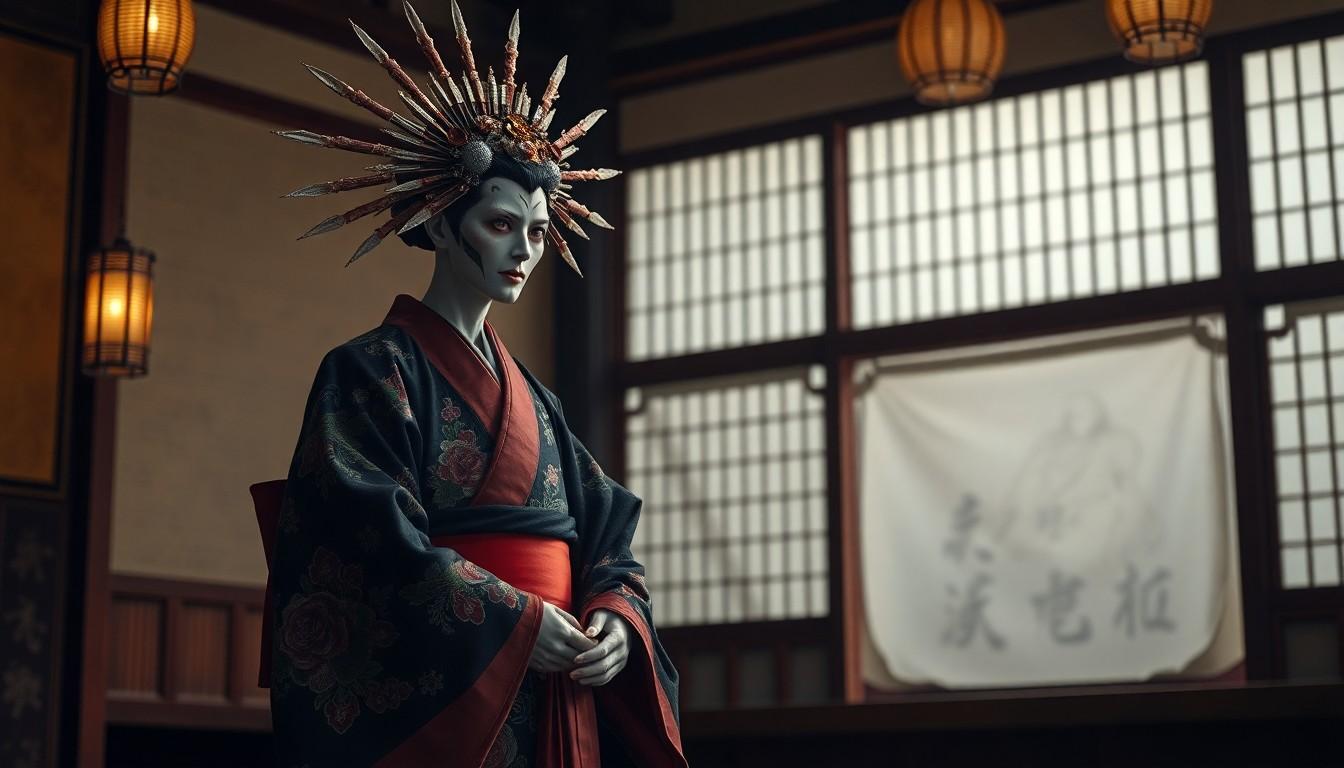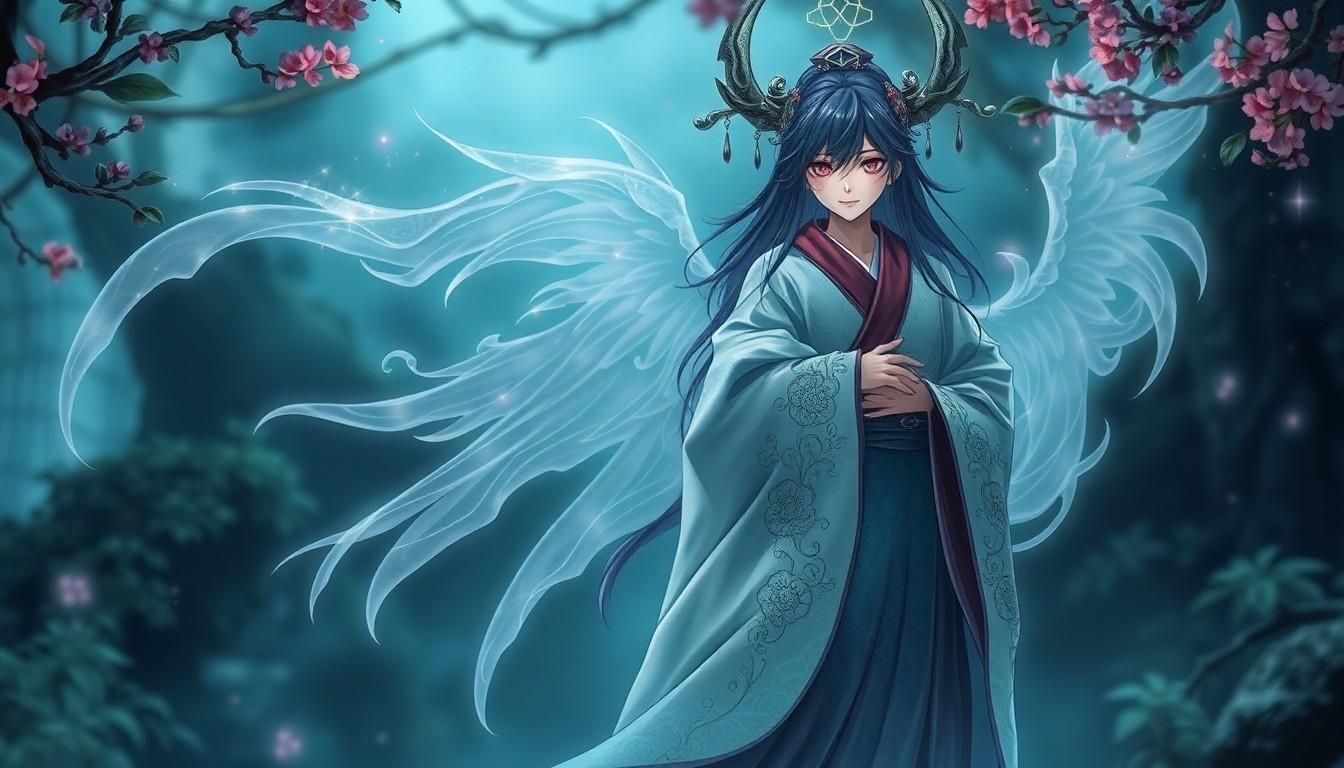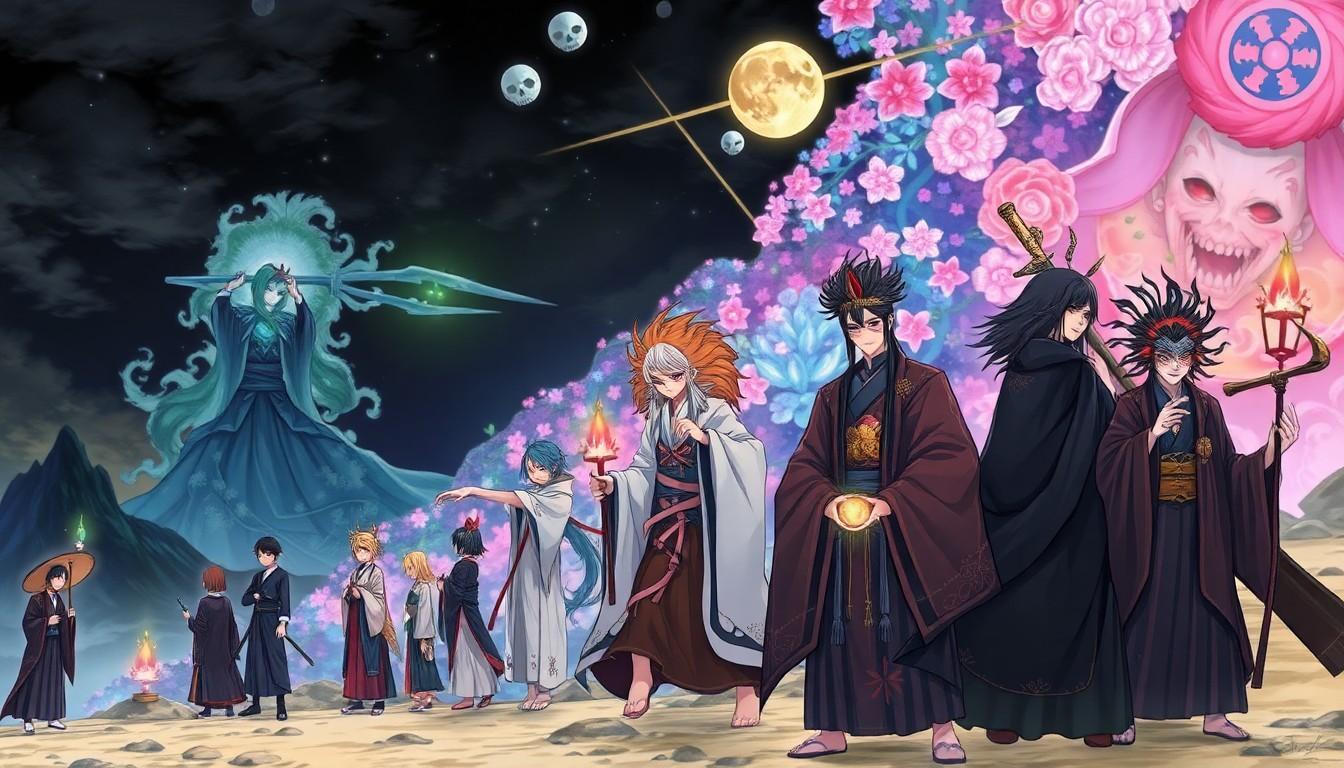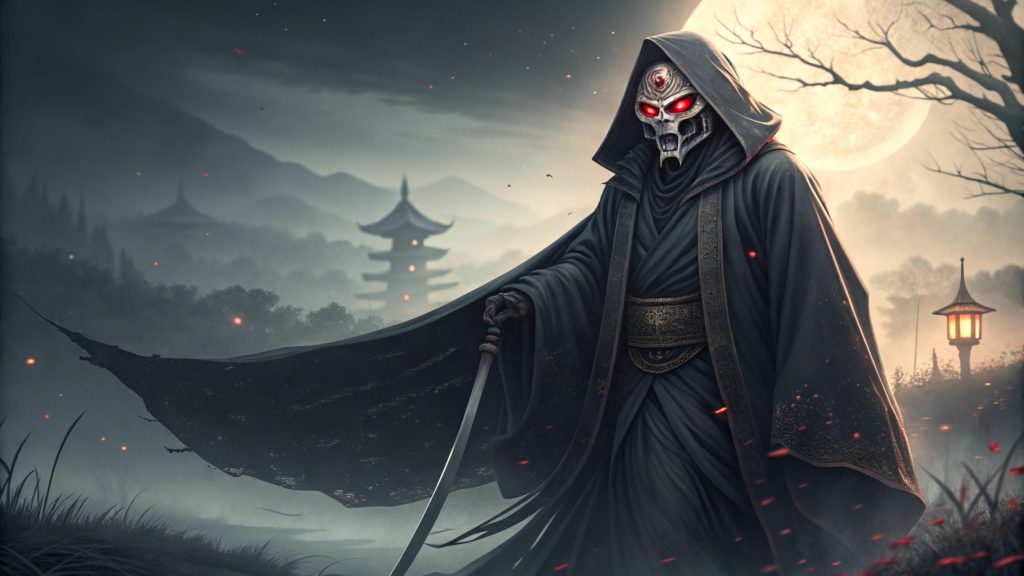In Japanese mythology and popular culture, Shinigami holds a fascinating position as supernatural beings associated with death and the afterlife. These “death gods” or “death spirits” serve as psychopomps, guiding souls from the mortal realm to their final destination.
The concept of Shinigami has evolved significantly over time, gaining widespread recognition through manga, anime, and other forms of modern media. While traditional Japanese folklore didn’t initially include these death deities, they’ve become deeply embedded in contemporary Japanese storytelling. From the dark and brooding characters in “Death Note” to the sword-wielding soul reapers in “Bleach,” Shinigami now represent one of Japan’s most compelling supernatural exports to global pop culture.
What Is A Shinigami: Understanding The Japanese God Of Death
Shinigami represents a supernatural entity in Japanese culture. The word “shi” (death) is combined with “kami” (god) to create the literal meaning “god of death.” These spiritual beings serve as guides between the mortal realm and the afterlife.
Cultural Role and Purpose
Shinigami function as divine mediators who escort souls from the world of the living to the realm of the dead. These entities maintain the natural balance between life and death by ensuring individuals pass away at their predetermined time.
Physical Manifestation
The visibility of Shinigami remains limited to specific circumstances:
- Individuals approaching death
- People with spiritual awareness
- Those with supernatural connections
Shinigami’s appearances vary significantly, unlike the Western Grim Reaper’s consistent skeletal form. Their forms adapt based on the following:
| Appearance Factor | Description |
|---|---|
| Physical Form | Multiple manifestations possible |
| Visibility | Limited to specific individuals |
| Traditional Depiction | Less intimidating than Western counterparts |
Distinctive Characteristics
Shinigami possess unique traits that separate them from other mythological death spirits:
- Guide souls rather than harvest them
- Work as facilitators rather than harbingers
- Maintain neutrality in their duties
- Operate within established natural laws
These characteristics reflect Japanese cultural views on death as a natural transition rather than a fearsome end, positioning Shinigami as spiritual guides rather than threatening entities.
Origins And Cultural Significance Of Shinigami

Shinigami emerged during Japan’s Edo Period as a cultural fusion between Western and Eastern concepts of death deities. Their development significantly shifts Japanese spiritual beliefs about death and the afterlife.
Ancient Japanese Folklore And Beliefs
Japanese folklore originally lacked the concept of shinigami in its traditional mythology. Shinigami was introduced in the 18th or 19th century through Japanese puppet theater productions and literary works. These early representations portrayed shinigami as polite entities who extended invitations to death rather than forcefully claiming souls, distinguishing them from Western death deities.
Buddhist And Shinto Influences
The evolution of shinigami reflects the integration of Buddhist concepts of death and rebirth with Shinto spiritual traditions. Unlike the Western Grim Reaper’s intimidating presence, shinigami embody a more nuanced approach to death, facilitating the natural cycle of life and death. Their role aligns with Buddhist principles of transition and transformation, while their status as kami (gods or spirits) connects them to Shinto beliefs about supernatural entities.
| Time Period | Development Stage | Cultural Impact |
|---|---|---|
| Pre-18th Century | Absent from folklore | Traditional death concepts |
| 18th-19th Century | Introduction in literature | Cultural fusion begins |
| Edo Period | Integration in theater | Refined characterization |
Common Characteristics Of Shinigami

Shinigami are supernatural entities that guide souls to the afterlife, serving as intermediaries between the mortal realm and the beyond. Their existence stems from a blend of Eastern spirituality and Western death deity concepts that emerged in Japanese culture during the 18th century.
Physical Appearance And Forms
Shinigami takes diverse forms in Japanese media, unlike the singular skeletal figure of the Western Grim Reaper. Their appearances range from traditional Japanese spirits wearing ceremonial robes to modern humanoid beings dressed in contemporary attire. These death gods maintain human-like features while incorporating supernatural elements such as:
- Ethereal auras surrounding their forms
- Traditional Japanese ceremonial clothing
- Distinctive markers of their supernatural status, like unusual eye colors
- The ability to shift between visible and invisible states
Powers And Abilities
Shinigami possess specific supernatural abilities tied to their role as death guides. Their core powers focus on:
- Soul guidance: Escorting spirits from the mortal realm to the afterlife
- Death Perception: Sensing when individuals approach their final moments
- Spiritual awareness: Detecting supernatural entities and spiritual energies
- Form manipulation: Transitioning between visible and invisible states
- Soul judgment: Evaluating the worthiness of souls for their journey
These beings operate within strict supernatural laws, performing their duties as facilitators rather than arbiters of death. Their powers serve to maintain the natural balance between life and death, reflecting their position as neutral entities in the cosmic order.
Shinigami In Popular Culture

Shinigami has become influential in contemporary media entertainment, particularly Japanese popular culture. Their portrayals range from traditional death gods to complex characters with distinct personalities.
Anime And Manga Depictions
Japanese animation presents Shinigami in diverse forms across various series. In “Death Note,” Shinigami exist as supernatural beings who possess deadly notebooks capable of killing humans whose names are written in them. The character Ryuk embodies a more traditional death god role, appearing as a tall humanoid figure with dark wings. Other notable representations include:
- Bleach: Features Shinigami as soul reapers who maintain a balance between worlds
- Soul Eater: Depicts them as students training at Death Weapon Meister Academy.
- Full Moon wo Sagashite: Portrays them as guides helping souls transition to afterlife.
- Black Butler: Presents them as bureaucratic officers managing death records.
Modern Interpretations
Contemporary media has transformed Shinigami from simple death deities into multifaceted characters with complex motivations. Modern portrayals include:
- Video Games: Characters in games like “Persona” series serve as death-themed entities
- Light Novels: Featured as protagonists with human-like emotions and relationships
- Digital Media: Appear in mobile games and visual novels with varied artistic interpretations
- Western Adaptations: Incorporated into non-Japanese works with cultural modifications
Their appearances range from traditional Japanese spiritual beings to modernized versions wearing contemporary clothing and supernatural accessories. These interpretations maintain core death-related functions while adding unique personality traits and moral complexities.
The Evolution Of Shinigami In Contemporary Media
Shinigami emerged in Japanese culture during the 18th to 19th century through a fusion of Eastern spirituality and Western death deity concepts. The transformation of these supernatural beings reflects the cultural exchange between Japan and the West during this period.
Origins and Influence
The concept of Shinigami evolved from a cultural intersection, absorbing elements from both Eastern spiritual traditions and Western representations of death. Unlike the Western Grim Reaper’s intimidating presence, Shinigami developed as more nuanced spiritual guides. This cultural synthesis created a unique interpretation of death deities that resonates in modern media.
Traditional Folklore
Early Japanese literature, particularly during the Edo Period, portrayed Shinigami as malevolent entities with specific characteristics:
- Possession abilities: Shinigami could take control of individuals
- Deceptive nature: These beings lured humans into dangerous situations
- Manipulative tendencies: They influence humans to commit acts of self-harm
- Spiritual manifestation: Shinigami appeared as ethereal beings rather than physical forms
| Time Period | Shinigami Characteristics | Cultural Context |
|---|---|---|
| 18th-19th Century | Emergence in literature | Cultural exchange with West |
| Edo Period | Malevolent spirits | Traditional Japanese folklore |
| Modern Era | Complex supernatural beings | Contemporary media adaptation |
Through theatrical performances, literature, and folklore, the representation of Shinigami evolved from simple death spirits to intricate supernatural beings. Their portrayal shifted from purely malevolent entities to more complex characters with distinct personalities and motivations. This transformation laid the foundation for their modern interpretations in contemporary Japanese media.
Conclusion
Shinigami have evolved from their humble beginnings in Japanese folklore to become iconic figures in modern entertainment. Their transformation from simple death deities to complex characters reflects the dynamic nature of Japanese storytelling and cultural adaptation.
These supernatural beings continue to captivate audiences worldwide through various media forms, demonstrating the enduring appeal of Japanese mythology in contemporary culture. Their portrayal as neutral guides rather than fearsome reapers offers a unique perspective on death and the afterlife that resonates with audiences across cultural boundaries.
The lasting influence of Shinigami on global pop culture showcases how traditional concepts can be reimagined to create compelling narratives that bridge cultural divides while maintaining their essential spiritual significance.

